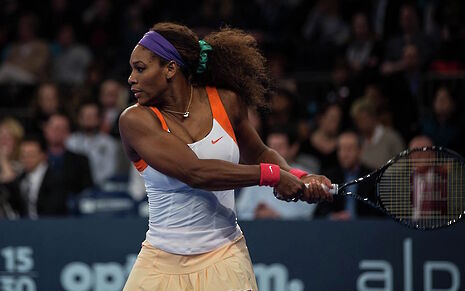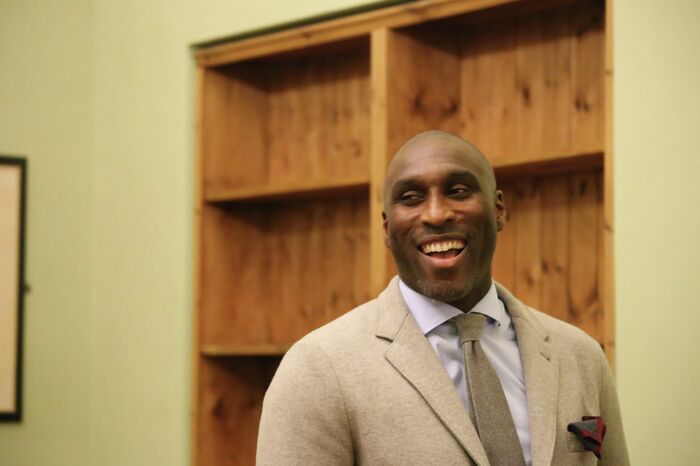How fair is the tennis scoring system?
Finn Ranson talks to Dr Chris Hope about his recent work analysing tennis’s scoring system, and considers how alternative formats would change the game

Jose Mourinho would have us believe that sport is the domain of the soul not the mind. Logic and numbers have no place. “The way people that don’t understand football analyse football is with stats,” he said after the Manchester derby; “I don’t go for stats, I go for what I felt and I watch in the game”.
Last month I spoke to the bespectacled enemy. Dr Chris Hope, an Emeritus Reader in Policy Modelling at Clare Hall, specialises in the metrics of public policy, using models to investigate climate change policies in countries across the globe. The Cambridge academic has also turned his metric dark arts to sport: in the summer of 2002, Hope calculated a strategy to determine the best time for a Premier League club to sack its manager. Recently, Hope has been absorbed by a quite different conundrum.
Tennis is a sport steeped in numbers: points lead to games, games to sets, sets to matches. The fragmented scoring system is one of the sport’s major strengths – in Hope’s words, it makes for various “mini-dramas” over the course of a match. The return to 0 every game and set sustains the competition in a way a running tally would not. In other words, the format counteracts dominance and maximises the ‘weaker’ player’s chances of causing an upset. But is this fair?
“Tennis makes dominance hard and drama easy”
“If you have somebody who is a better player and somebody who is a slightly weaker player objectively,” as Hope put it to me, “how often under this format does the worse player win?”
Hope categorised players into four qualitative groups to figure this out – moderate, good, strong, or exceptional on serve. For men, this would mean having a minimum win percentage on serve of 62.5%, 67.5%, 72.5%, or 77.5%. For women, 55%, 60%, 65%, or 70%, to reflect the lower percentage of points won on average on serve on the Women’s tour.
It was then a matter of using the same probabilistic techniques Hope adjusted for Premier League managers to calculate what kind of bearing tennis’ format has on a one-sided match-up. Hope simulated a match under tennis’ typical scoring system over 100,000 times with his model; he then did the same for a running score with each player alternating serve for six points. The winner would be the first to 151 points for men, or 91 points for women, the average length of an actual five or three set match. This way a win percentage could be calculated for various underdog encounters under the two formats, and compared.
When the rift is large – between moderate and exceptional – the relative increase is greatest, but in absolute terms it is minimal. When a player who is strong on serve plays one who is exceptional, though, the weaker player in this instance for men wins 7.7% more matches than if the scoring system were points-based; for women, a substantial 3.2% gain. More than that, things are made exponentially more competitive the narrower the margins. Tennis makes dominance hard and drama easy.
This might seem like the misguided pedantry of a mathematician. For one, being the best is not necessarily reducible to winning the most points on serve: world number one Simona Halep won just 59% of points on serve throughout the year, putting her thirteenth against the top 20. And it’s only right that some points are worth more than others. Tennis should be as much a test of mental steel as physical skill. Hope accepts that numbers can only tell part of the story.
“Everybody has to decide that for themselves,” he insisted. “Some people are passionate that we should go over to a more straightforward scoring system. But for others it’s one of the glories of tennis that you get all these mini-dramas and you don’t have long periods where it’s really boring.
“The evidence that tennis is walking a dangerous tightrope with its formats is everywhere”
“All I can do is put out the facts and ask whether we think that is a reasonable trade-off to have in order to have a more exciting game.”
And yet the evidence that tennis is walking a dangerous tightrope with its formats is everywhere. There have been six ‘Tiebreak Tens’ tournaments in the past three years, where matches consist of just one tiebreak to ten in a quick-fire eight-player knockout. Fast4 Tennis has swept the UK domestic circuit, and in November the ATP once again ran its own five set iteration at the second NextGen Finals. The event was exciting. Sets were first to four games, with no advantages and decided by a tiebreak at three games all. There were bigger points, more often. This format, the ATP assured us, was the result of “extensive market research and fan surveys across more than 13 different markets through SMG Insight”.
Hope intends to repeat his modelling on the ATP-SMG love-child ahead of Wimbledon, and he expects to find that it is even more unfair.
“And that’s something fans, players and administrators in the game have to consider seriously,” he said bluntly. “It may well be that it would be worth going to that format for at least some competitions. But if it turns out that it’s an awful lot more unfair then people might want to think twice about it.”
A fortnight after we spoke, the Australian Open announced it would be introducing a first-to-10-points tiebreak at 6-6 in the deciding set.
“We went with [this format] to ensure the fans still get a special finale to these often epic contests,” announced tournament director Craig Tiley. “This longer tie-break also can lessen some of the serving dominance that can prevail in the shorter tie-break.”
Tiley’s statement is that desperate pretension of the dramatic we now expect of sport. But the one thing we truly want and expect of sport is justice. We are cheated by numbers in the world all the time, from referendum results to the price of a pot of strawberries and cream. We expect better of sport. The score must reflect what we see and, I daresay, feel. As soon as we lose that, we lose interest. Perhaps tennis should be careful what it wishes for.
 News / Caius mourns its tree-mendous loss23 December 2025
News / Caius mourns its tree-mendous loss23 December 2025 News / Clare Hall spent over £500k opposing busway 24 December 2025
News / Clare Hall spent over £500k opposing busway 24 December 2025 Comment / Yes, I’m brown – but I have more important things to say22 December 2025
Comment / Yes, I’m brown – but I have more important things to say22 December 2025 Comment / The ‘class’ of Cambridge24 December 2025
Comment / The ‘class’ of Cambridge24 December 2025 Interviews / Politics, your own way: Tilly Middlehurst on speaking out21 December 2025
Interviews / Politics, your own way: Tilly Middlehurst on speaking out21 December 2025








